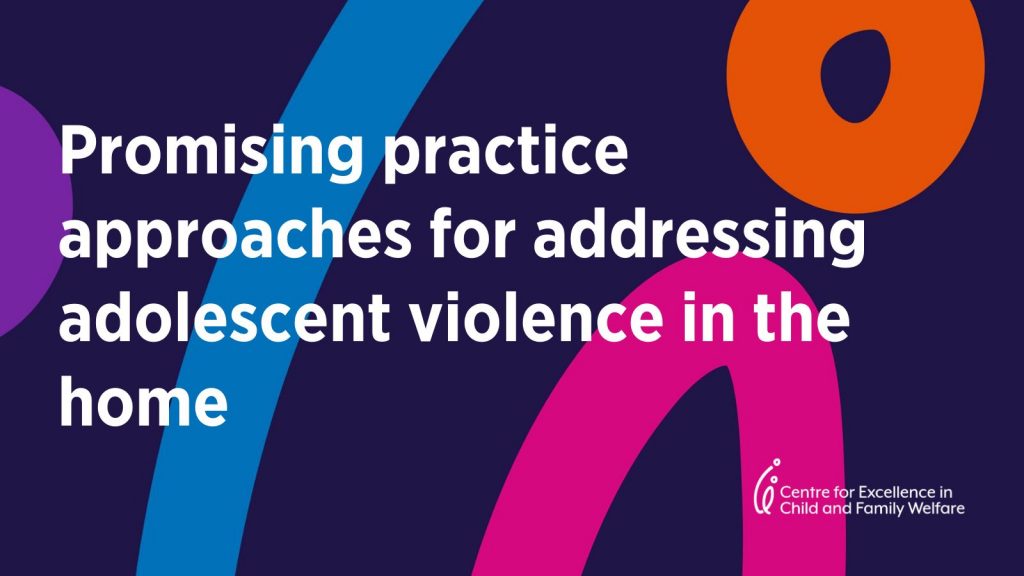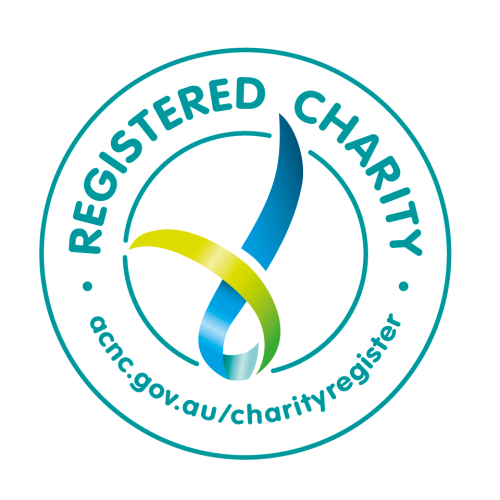The Centre has been working with a wide range of professionals, peaks bodies and Family Safety Victoria to help build a robust evidence base in the area of young people who use violence in the home (often called Adolescent Family Violence). This is a complex and challenging area to be working in. While people engaging in violent behaviour against family members need to be held accountable, they are at the same time children and in need of care and protection. There is a lot of interest in knowing how we can support these young people earlier in their lives, and work effectively with them and their families.
Karalyn Davies, Project Officer for the Adolescence Violence in the Home project spoke with Kasey Holyman, Programs Manger at Uniting’s Child, Youth and Families in the Goulburn North East Region, about the issue of young people using violence in the home, and the service and practice approaches that seem promising.
I understand that Uniting run youth homelessness support programs and that staff encounter a number of young people being excluded from the home for their use of violence. Can you tell us a bit about these programs and the types of presentations of young people that you might commonly see?
This is a space we’ve accidentally ended up in. Particularly for youth services specialising in youth homelessness, violence is such a prevalent issue, whether it’s about being a victim survivor, or using violence. We run two programs that are related to homelessness, which are Detour and Reconnect. In theory, Detour is an early intervention program but being a regional service we end up operating more broadly than originally intended. And Reconnect is for newly-arrived young people aged between 12-21.
We noticed a trend around adolescents using violence – some of them were being excluded from the home – which coincided with some other work Uniting is doing in Melbourne called Step Up. It also coincided with the release of the PIPA report. We used some impact measurements and noticed that we were getting some really strong outcomes, both in terms of establishing safety and overall wellbeing. And we thought what are we doing that works? So that led us down this path of thinking how we could articulate and manualise something that we could share with other agencies or other communities to try and replicate what we’re doing here.
Violence in the home is not necessarily the reason a young person initially engages with the service; the worker is initially engaging with them around housing support?
Yes, the worker engages around early intervention for risk of homelessness, which is a really broad definition. Evidence tells us that the best thing we can do is keep the young person in the home, wherever possible and safe to do so. (Of course, it’s not always possible and so sometimes we do support them to find alternative living arrangements, but our priority is stability within the family home.)
So a lot of what we’re trying to do is about respecting the young person. It’s never a simple, quick fix. One of the strengths we’ve found is that we don’t go in about the violence. It’s not about coming in and wanting to change them, it’s recognising that things are tough, and we want to unpack that, and the conversation about violence comes out through that. So, we might not even go in knowing the kids are using violence, we have some kids that are doing great at school and in other relationships and are only using violence at home.
One of the things we’ve heard in our cross-sector consultation forums is practitioners telling us that it can take time to build rapport and set up engagement with young people. How do you think workers are able to do that in your program?
Our work is necessarily very young-person centred. We try to identify what they feel like they can fix and what we can get their family involved in. We may do some family mediation support, referring the parents in. With the young person we may also be working on some other forms of stability they want, so it might be more around engagement in education, maybe mental health supports, it depends what they want. Our focus is the young person, they are our client.
I think [this approach] really changes the mindset of young people. This is broadly reflected in a lot of our consultation work and research, young people don’t feel like they’re part of decision making. Or they feel like they are ‘the problem’. A lot of the narratives we hear around family work can be that the young person’s behaviour is ‘out of control’ … this really unhelpful labelling starts to happen. And I get it, there are some really challenging behaviours, but our team all work to the mantra that ‘you are not the problem, the problem is the problem’. It’s about having a team that understands trauma-informed practice and attachment theories, because we need to be compassionate – it’s never a case of a young person from a healthy and adjusted background who is using violence. That’s just not what we’re seeing.
Uniting also hold a men’s behaviour change group where we use the Duluth Model, which is about challenging beliefs and attitudes, but even though it’s a behaviour change model, if you come in with shaming you can unintentionally replicate behaviours that you’re trying to stop. And one thing we’ve learned is that young people are very sensitive to disingenuous approaches.
We know from research, including the PIPA report, that kids who are using violence have often experienced it themselves. We try not to use the word ‘perpetrator’ in relation to young people. Sometimes it’s a case of violence resistance, which is a really complicated narrative to unpack. If the [adult] perpetrator is still a big part of the young person’s life, it starts to get really messy. I think having a program that can sit in the chaos and not come in with ‘this is our role’ with a limited approach is what is really valuable.
Just thinking about some of the other manualised, ‘off the shelf’ programs designed to work with this cohort of young people, would you consider implementing one of these in your service?
The current model we’re seeing in this space is the Step Up model. And I think it’s a really good compliance model. It seems like the youth version of the men’s behaviour change program. But we don’t often have the same systems to implement here in regional areas.
This notion of utilising ‘off the shelf’ models is something we need to be really carefully considering. It means taking this program which was intended to be 22 weeks and condensing it to 10 weeks, and individual service providers have all taken very different approaches to implementing these programs. Some places won’t take the young person when the original adult perpetrator of violence is still in the home because this is seen to increase the risk, and if the program does make a decision to admit them into the program, how do they navigate that complexity?
For us in this location, our service reach is 3 hours top to bottom, so a place-based group model is very limiting in terms of access. Even with moving things online, that’s really only going to be suitable in a handful of cases. So I think we need a model that’s a bit more adaptive and a bit more responsive to regional areas, that also leverages existing resources. The RCFV has injected more money into this space, but that’s not an infinite amount. We need to be really intentional about whether it’s meeting the needs of all or just some of the young people who are using violence. No one model will do that perfectly. But we need to be asking is this model the best place to be putting our limited resources to get the best and most far reaching impact for our young people.
So instead of delivering a specialist intervention program, your team is able to provide support to young people using violence by working closely with other key agencies in the area. Can you tell us a bit more about how this service model works?
We’re currently in the process of building it out, what we’re doing is mapping out what services cross adolescent violence and looking at how we can equip ourselves and each other to identify and respond earlier. Over time, I think we will need to look at getting some funding for a specialist adolescent intervention program. But in the interim we’re working together with some other agencies. For example, working with restorative justice, how we can incorporate counselling. And we’re trying to work with community legal centres to try and create a more holistic response. Basically we’re interacting with young people and families, how can we be more intentional and how do we capture results quicker? And also how do we design an early intervention training for schools?
We know there’s a lot of shame for parents so we need to make sure that whatever we design addresses that. We need to ensure we’re engaging with parents in a respectful way that acknowledges that this stuff is hard, and that there’s not a lot of supports out there. It’s really complex work.
Why do you think this approach works for your location?
We always tend to say ‘transport and infrastructure’ are the two biggest challenges for us. The further you get out of central towns, the more you start to see a real lack of specialist tertiary services in regional areas. For example, we know there’s really high comorbidity of young people with mental health issues and problematic substance use, there’s no Youth AOD services in Goulburn. So when you design a service, you need to be mindful of what you do and don’t have at your disposal, and you need to be realistic. You need to do this really honestly and evaluate your capacity, your waitlists, your referral rates, your staff training.
I always say that our staff are ‘generalised specialists’. They’re about early intervention and prevention of youth homelessness, but the reality is that they’ve had a much broader training set to address the fact that we don’t necessarily have access to services that we would like to.
I come from an urban setting, I thought I knew what to expect, but it’s been a real culture shock. If I ever went back to working in urban settings, I would completely change the way I work with regional service providers, because I get it now, it’s hard! It’s hard anyway in urban areas, but when you’ve got a kid who’s an hour and a half away and there’s no transport, what do you do?
With the integrated service model that you’re using, what sort of results have you had with this approach?
When we do our reporting, we go back and look at where young people have ended up, and what we were seeing in most cases of those using violence was that either they ended up in independent living and there was no indication of ongoing violence towards family members or peers, or that we’d managed to keep them in the home and engaged them in education and that the family were reporting significantly less conflict. Initially when we started work with the young person there are IVOs, we’re accompanying them to court, and when they exit, they’re doing well and they have improved relationships. We’ve gone back and seen only a few cases we’ve closed where the violence didn’t stop. Overall it’s been positive, and we were really surprised by what we were seeing.
It sounds like you’ve seen these results and that’s been the driver for wanting a bit more clarity about why it’s working and being able to articulate and share that. For other service providers in a similar position where they think they’re on to something promising, what are the preliminary steps in operationalising and documenting those outcomes?
It is hard, we’re not funded to do this so we’re doing it on top of our existing workload. I’m really lucky to have an amazing team who are genuinely committed to and interested in working with these young people. For us it was about being really clear that it was something we wanted as a team to pursue. The work we’re doing now involves the whole team, it’s not just a top down approach where we’re telling people they need to start doing this [measuring outcomes]. It’s about making sure it’s a commitment from our whole team. Having a culture of curiosity is really helpful in a team.
We’ve also had to drag in other agencies who want to upskill their teams, because if we want to design a training program, we need to pilot it to make sure it makes sense for other agencies and is reasonable for their funding requirements. This should be a value-add, not a burden. For example, we’re really lucky that we’re an early intervention program so we don’t have time limits on our engagement, whereas for other services, how would this work?
Part of my background is in social enterprise, so I’ve had the privilege of learning about impact measurement and theory of change and program design, so I’ve been lucky to have had the opportunity to gain some of those skills. We’ve also begun work with the Centre’s OPEN team who have been great at reminding us of some crucial steps in our thinking. It sounds like you’ve put a lot of thought in to developing an approach that will suit the needs of your area. I’m sure your efforts will contribute to building evidence about regional service responses for young people using violence in the home. I wish you all the best with the rest of your activities in mapping out the details and outcomes of your program and we look forward to hearing more from you in the future.






